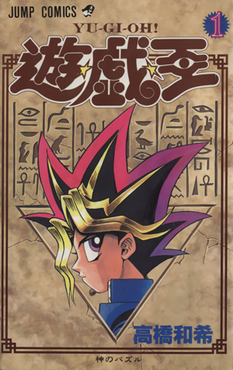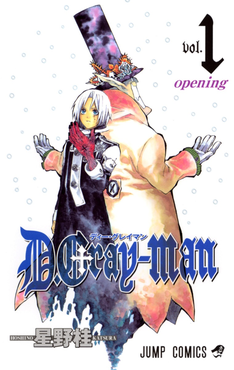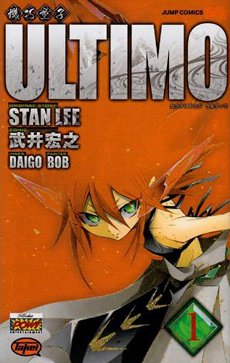Related Research Articles

Weekly Shōnen Jump is a weekly shōnen manga anthology published in Japan by Shueisha under the Jump line of magazines. The manga series within the magazine consist of many action scenes and a fair amount of comedy. Chapters of the series that run in Weekly Shōnen Jump are collected and published in tankōbon volumes under the Jump Comics imprint every two to three months. It is one of the longest-running manga magazines, with the first issue being released with a cover date of August 1, 1968.

Yu-Gi-Oh! is a Japanese manga series written and illustrated by Kazuki Takahashi. It was serialized in Shueisha's Weekly Shōnen Jump magazine between September 1996 and March 2004. The manga follows Yugi Mutou, a young boy with an affinity for games, who solves the ancient Millennium Puzzle. Yugi becomes host to a gambling alter-ego or spirit who solves his conflicts with various games. As the manga progresses, the focus largely shifts to the card game Duel Monsters, where opposing players "duel" one another in mock battles of fantasy monsters.

Shaman King is a Japanese manga series written and illustrated by Hiroyuki Takei. It follows the adventures of Yoh Asakura as he attempts to hone his shaman skills to become the Shaman King by winning the Shaman Fight. Takei chose shamanism as the main theme of the series because he wanted a topic that had never been attempted before in manga. The Shaman King manga was originally serialized in Shueisha's Weekly Shōnen Jump between June 1998 and August 2004. The individual chapters were collected and released in 32 tankōbon volumes. In 2017, Kodansha acquired the rights to the series and re-launched it on 35 e-book volumes in 2018, also published in print from 2020 to 2021.

Black Cat is a Japanese manga series written and illustrated by Kentaro Yabuki. It was originally serialized in publisher Shueisha's shōnen manga magazine Weekly Shōnen Jump from July 2000 to June 2004, with the chapters later collected into twenty tankōbon by Shueisha. The story centers on a man named Train Heartnet who withdrew from an elite group of assassins called the Chronos Numbers to become a bounty hunter.

Bleach is a Japanese manga series written and illustrated by Tite Kubo. It follows the adventures of a teenager Ichigo Kurosaki, who obtains the powers of a Soul Reaper—a death personification similar to a Grim Reaper—from another Soul Reaper, Rukia Kuchiki. His new-found powers allow him to take on the duties of defending humans from evil spirits and guiding departed souls to the afterlife, and set him on journeys to various ghostly realms of existence.
Masashi Kishimoto is a Japanese manga artist. His manga series, Naruto, which was in serialization from 1999 to 2014, has sold over 250 million copies worldwide in 46 countries as of May 2019. The series has been adapted into two anime and multiple films, video games, and related media. Besides the Naruto manga, Kishimoto also personally supervised the two canonical anime films, The Last: Naruto the Movie and Boruto: Naruto the Movie, and has written several one-shot stories. In 2019, Kishimoto wrote Samurai 8: The Tale of Hachimaru which ended in March 2020. From May 2016 through October 2020 he supervised the Boruto: Naruto Next Generations manga written by Ukyō Kodachi and illustrated by Mikio Ikemoto. In November 2020 it was announced that he had taken over as writer on the series, replacing Kodachi.

Shojo Beat is a shōjo manga magazine formerly published in North America by Viz Media. Launched in June 2005 as a sister magazine for Shonen Jump, it featured serialized chapters from six manga series, as well as articles on Japanese culture, manga, anime, fashion and beauty. After its initial launch, Shojo Beat underwent two redesigns, becoming the first English anthology to use the cyan and magenta ink tones common to Japanese manga anthologies. Viz launched a related imprint of the same name for female-oriented manga, light novels and anime.

D.Gray-man is a Japanese manga series written and illustrated by Katsura Hoshino. Set in an alternate 19th century, it tells the story of a young Allen Walker, who joins an organization of exorcists named the Black Order. They use an ancient substance, Innocence, to combat a man known as the Millennium Earl and his demonic army of Akuma who intend to destroy humanity. Many characters are adapted from Hoshino's previous works and drafts, such as Zone. The series is noted for its dark narrative; Hoshino once rewrote a scene she thought too violent for her young readers.
VIZ Media, LLC is an American entertainment company headquartered in San Francisco, California, focused on publishing manga, and distribution and licensing Japanese anime, films, and television series.

Claymore is a Japanese dark fantasy manga series written and illustrated by Norihiro Yagi. It debuted in Shueisha's shōnen manga magazine Monthly Shōnen Jump in June 2001, where it continued until the magazine was shut down in June 2007. The series was transferred to the newly launched Jump Square, serialized from November 2007 to October 2014. Its chapters were collected in 27 tankōbon volumes.

Shonen Jump, officially stylized SHONEN JUMP and abbreviated SJ, was a shōnen manga anthology published in North America by Viz Media. It debuted in November 2002 with the first issue having a January 2003 cover date. Based on Shueisha's popular Japanese magazine Weekly Shōnen Jump, Shonen Jump was retooled for English readers and the American audience, including changing it from a weekly publication to a monthly one. It featured serialized chapters from different manga series and articles on Japanese language and culture, as well as manga, anime, video games, and figurines. The premiere issue of Shonen Jump also introduced the first official English translations of One Piece, Sand Land, Yu-Gi-Oh!, YuYu Hakusho, and Naruto.

Ultimo, full title Karakuridôji Ultimo, is a Japanese manga series created by American comic writer Stan Lee and illustrated by Hiroyuki Takei. The plot of the story depicts a conflict between good and evil, implicated through the Karakuridôji created by the character Dr. Dunstan. The pilot chapter "Karakuridôji Ultimo: Chapter 0" was originally published in a special issue of Jump Square, called Jump SQ.II, on April 18, 2008. The series Ultimo was first serialized in Jump Square in March 2009, and it continued monthly serialization. Shueisha also published Ultimo in tankōbon format—the first published on July 3, 2009, and the fifth on November 4, 2010.
Jump, also known as Jump Comics, is a line of manga anthologies created by Shueisha. It began with Shōnen Jump manga anthology in 1968, later renamed Weekly Shōnen Jump. The origin of the name is unknown. The Jump anthologies are primarily intended for male audiences, although the Weekly Shōnen Jump magazine has also been popular with the female demographic. Along with the line of manga anthologies, Shōnen Jump also includes a crossover media franchise, where there have been various Shōnen Jump themed crossover anime and video games, which bring together various Shōnen Jump manga characters.
References
- ↑ Marc Weidenbaum (February 5, 2006), Off topic, four things
- 1 2 Marc Weidenbaum Named V.P. Magazines, ICv2, November 16, 2008, retrieved December 9, 2008
- ↑ Viz Seeks Original Comics, ICv2, July 14, 2008, retrieved December 9, 2008
- ↑ VP/Shonen Jump EIC Weidenbaum Leaves Viz (Updated), Anime News Network, February 13, 2009, retrieved February 13, 2009
- ↑ Chuck Eddy (1997), The Accidental Evolution of Rock'n'roll, p. 148, ISBN 978-0-306-80741-1
- ↑ Sam Henderson (2005), Humor Can Be Funny, ISBN 978-1-891867-41-5
- ↑ Marc Weidenbaum (2008), "Mix and mash-up", Nature, 453 (7191): 33–34, Bibcode:2008Natur.453...33W, doi: 10.1038/453033a